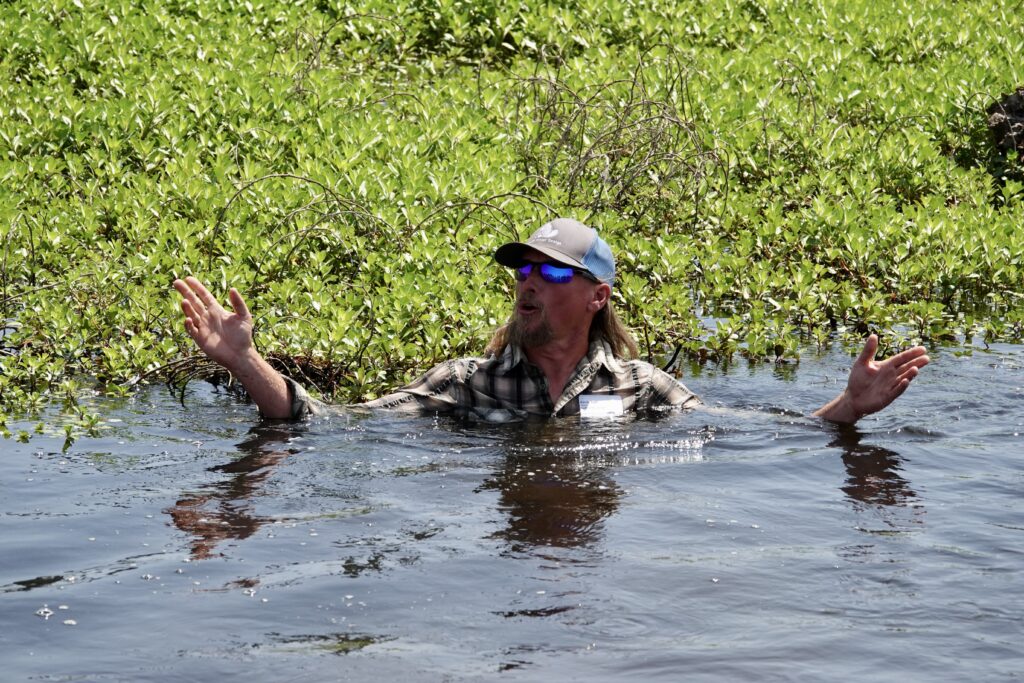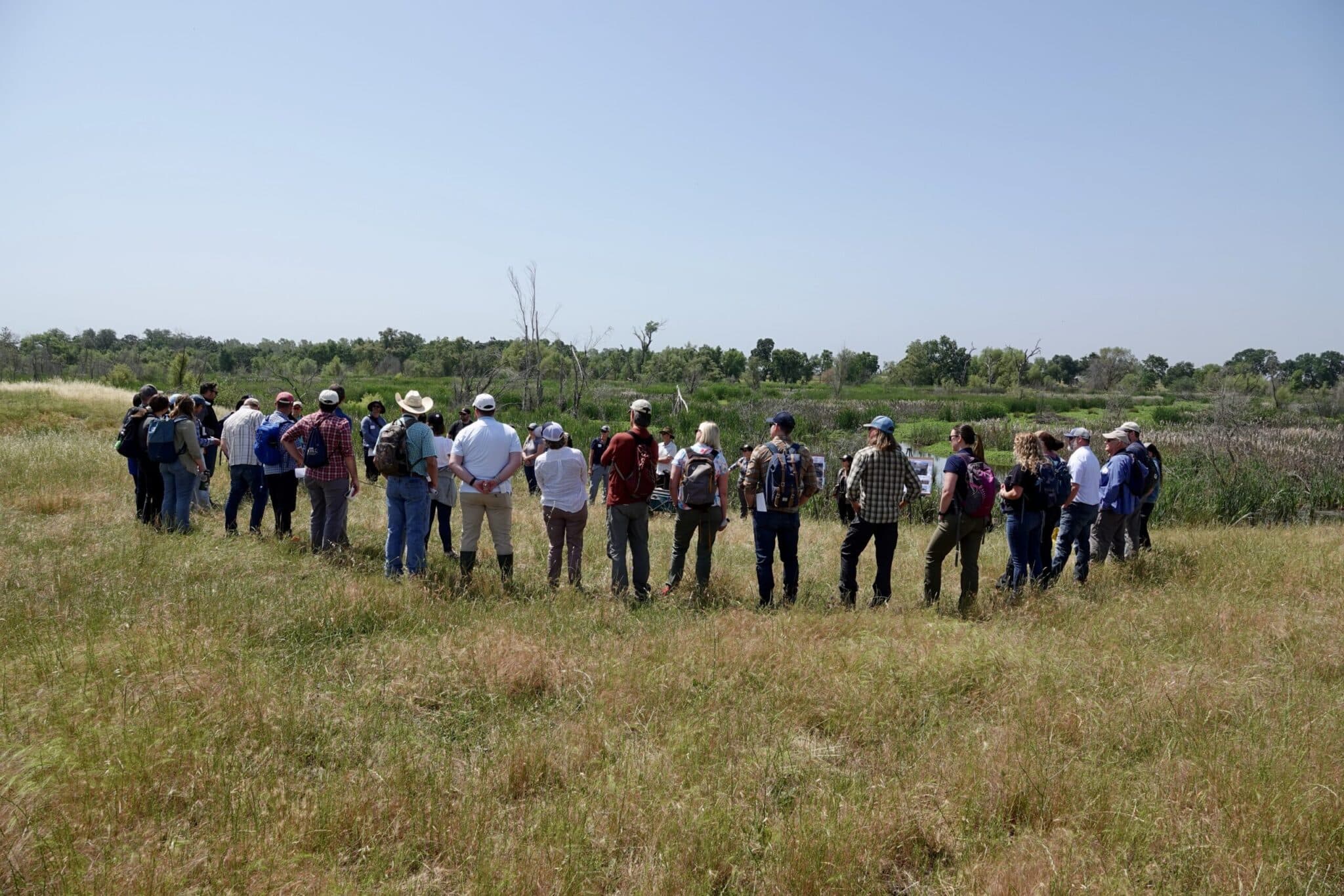On May 24, we partnered with the California Beaver Policy Working Group and wrangled 50 state leaders from Sacramento to Doty Ravine to see beaver restoration in action.
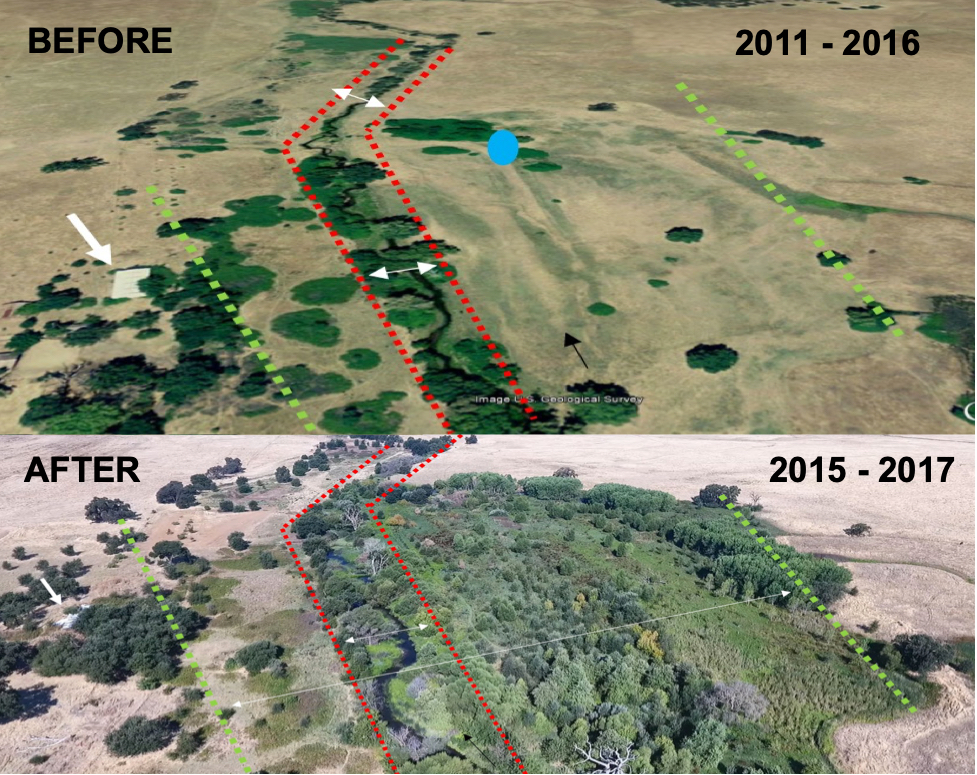
Protected since April 2005 through Placer Land Trust’s West Placer Habitat Protection Program, this 427-acre property in the Sierra foothills north of Lincoln, California, has stream, wetland riparian, vernal pool, and grassland habitat. The property is a working landscape that supports multiple ongoing restoration projects for streams, wetlands, grasslands, and riparian forests, as well as rotational cattle grazing.
The day was a roaring success. Participants got to see a great example of how learning to live and actively partner with beaver can help achieve many restoration goals at a fraction of the cost of mainstream restoration techniques. By reinforcing the beaver dams, adding more channel spanning structures, and giving the beaver more access to the floodplain by breaching two levees, project partners were able to increase the wetted width of a stream by 1,000% in less than 5 years.
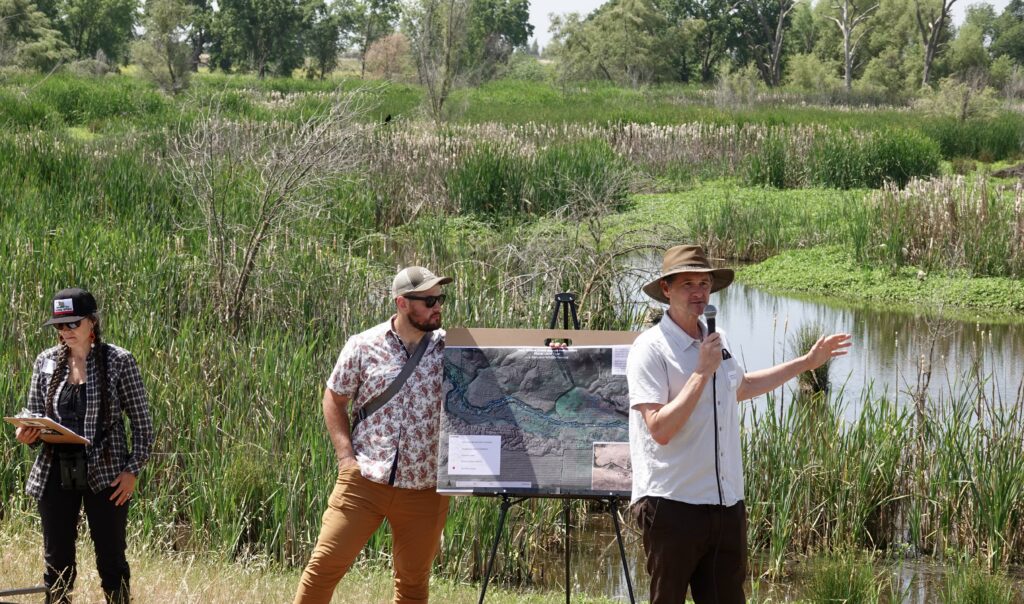
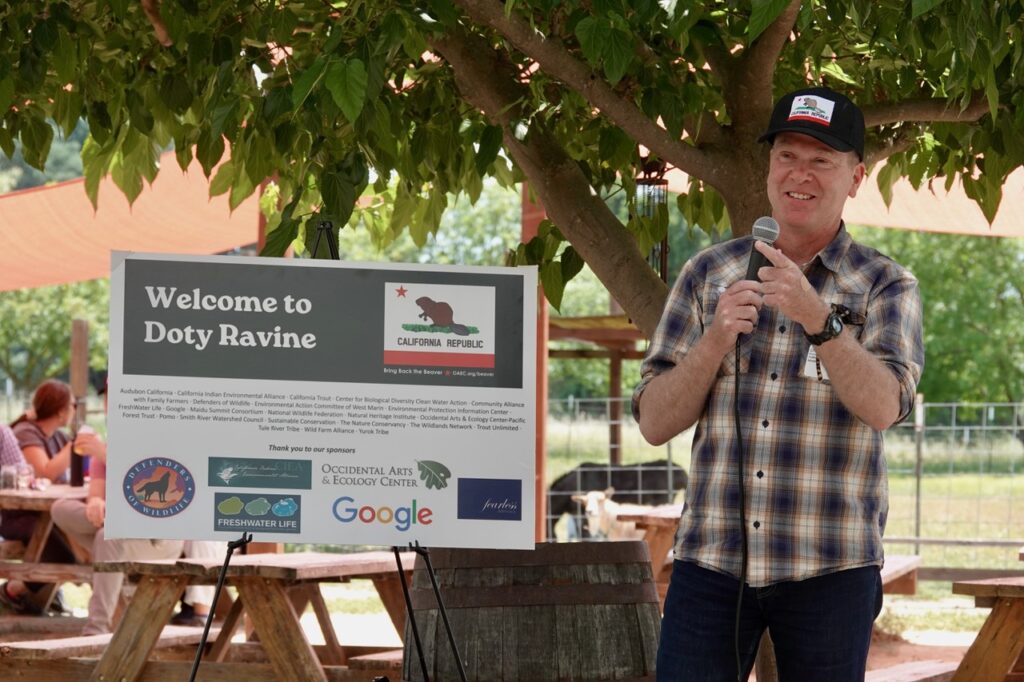
Speakers along the tour included Damion Ciotti, Restoration Ecologist with the US Fish and Wildlife Service and Elias Grant, Land Manager at Placer Land Trust, along with process-based restoration practitioner, Kevin Swift, and our own Kate Lundquist and Brock Dolman. Lunch at GoatHouse Brewery followed, catered by Real Food Catering. Speakers included Chuck Bonham, Director of the California Department of Fish and Wildlife, Kenneth McDarment, Tule River Tribal Council Member, Devon Mathis, Assembly Member, and Valerie Cook, head of the new Beaver Restoration Program at CDFW.
Thank you to our sponsors: California Indian Environmental Alliance, Defenders of Wildlife, Fearless Advocacy, Freshwater Life, Google, and Occidental Arts & Ecology Center.
